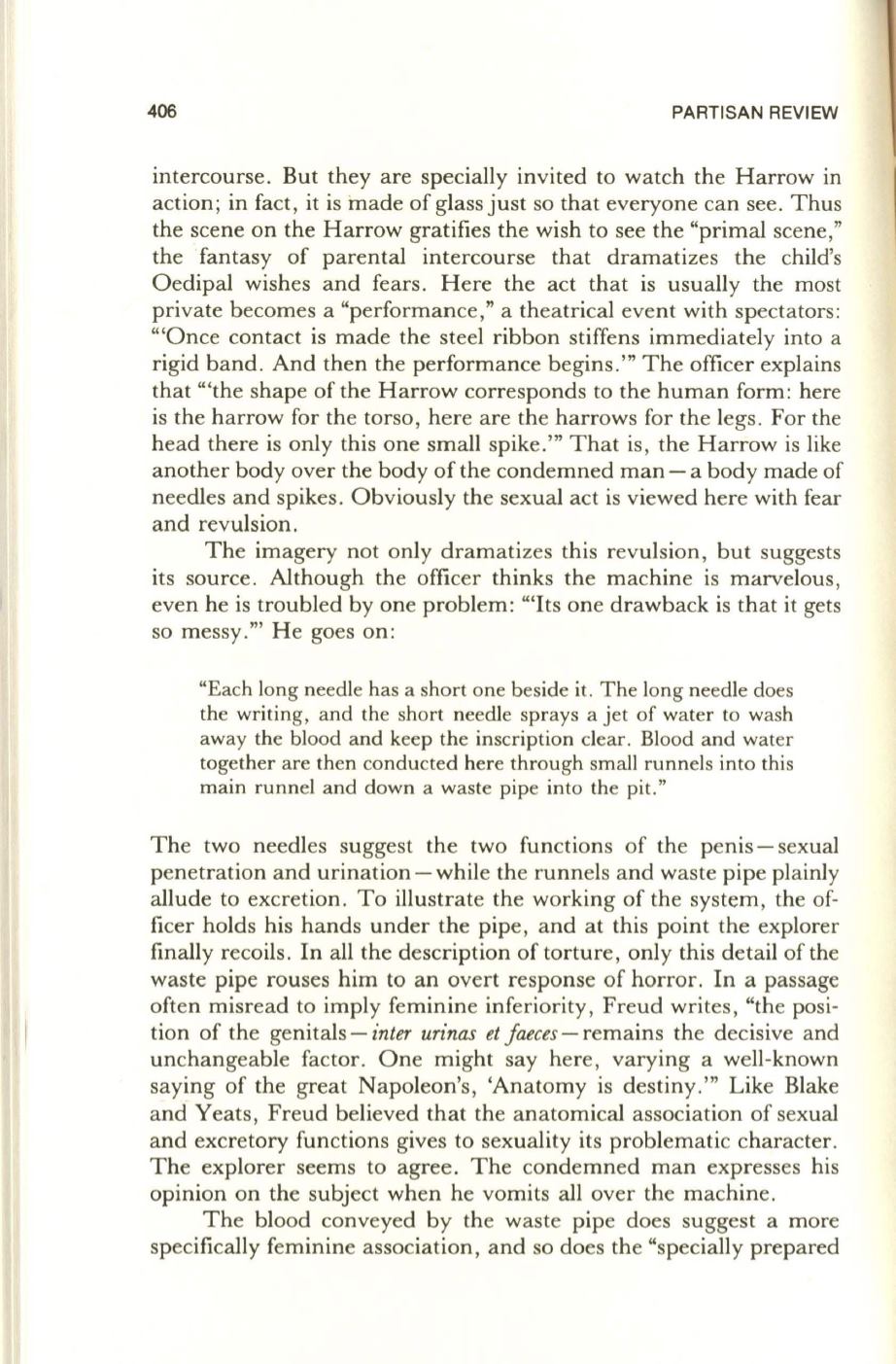
406
PARTISAN REVIEW
intercourse. But they are specially invited to watch the Harrow in
action; in fact, it is made of glass just so that everyone can see. Thus
the scene on the Harrow gratifies the wish to see the "primal scene,"
the fantasy of parental intercourse that dramatizes the child's
Oedipal wishes and fears. Here the act that is usually the most
private becomes a "performance," a theatrical event with spectators :
'''Once contact is made the steel ribbon stiffens immediately into a
rigid band. And then the performance begins.'" The officer explains
that "'the shape of the Harrow corresponds to the human form: here
is the harrow for the torso, here are the harrows for the legs. For the
head there is only this one small spike.'" That is, the Harrow is like
another body over the body of the condemned man - a body made of
needles and spikes . Obviously the sexual act is viewed here with fear
and revulsion.
The imagery not only dramatizes this revulsion, but suggests
its source. Although the officer thinks the machine is marvelous,
even he is troubled by one problem: "'Its one drawback is that it gets
so messy."' He goes on:
"Each long needle has a short one beside it. The long needle does
the writing, and the short needle sprays a jet of water to wash
away the blood and keep the inscription clear. Blood and water
together are then conducted here through small runnels into this
main runnel and down a waste pipe into the pit."
The two needles suggest the two functions of the penis - sexual
penetration and urination - while the runnels and waste pipe plainly
allude to excretion. To illustrate the working of the system, the of–
ficer holds his hands under the pipe, and at this point the explorer
finally recoils. In all the description of torture, only this detail of the
waste pipe rouses him to an overt response of horror. In a passage
often misread to imply feminine inferiority, Freud writes, "the posi–
tion of the genitals -
inter urinas et faeces
-
remains the decisive and
unchangeable factor. One might say here, varying a well-known
saying of the great Napoleon's, 'Anatomy is destiny.'" Like Blake
and Yeats, Freud believed that the anatomical association of sexual
and excretory functions gives to sexuality its problematic character.
The explorer seems to agree. The condemned man expresses his
opinion on the subject when he vomits all over the machine.
The blood conveyed by the waste pipe does suggest a more
specifically feminine association, and so does the "specially prepared


